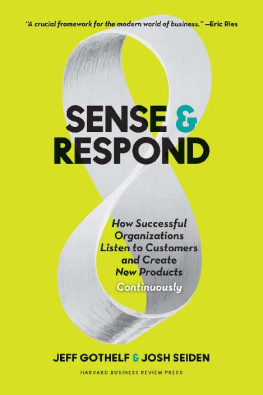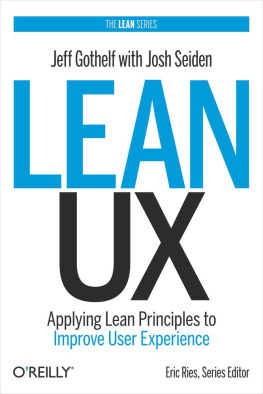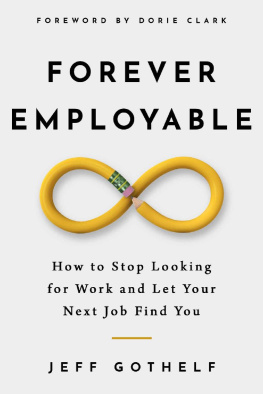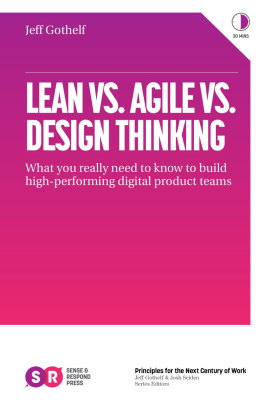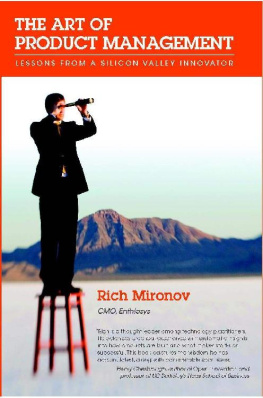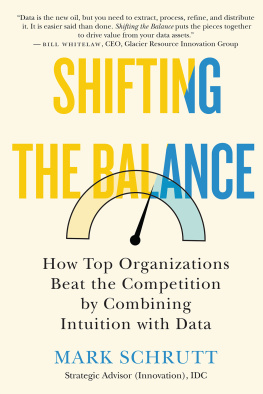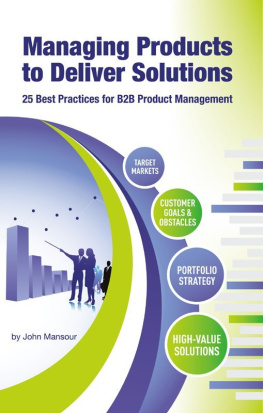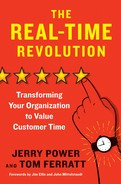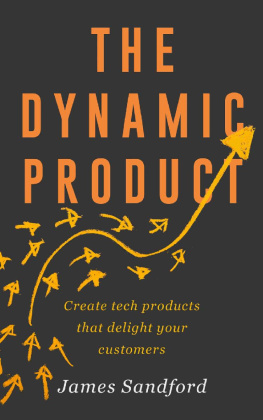Harvard Business Review Press titles are available at significant quantity discounts when purchased in bulk for client gifts, sales promotions, and premiums. Special editions, including books with corporate logos, customized covers, and letters from the company or CEO printed in the front matter, as well as excerpts of existing books, can also be created in large quantities for special needs.
For details and discount information for both print and ebook formats, contact .
No part of this publication may be reproduced, stored in or introduced into a retrieval system, or transmitted, in any form, or by any means (electronic, mechanical, photocopying, recording, or otherwise), without the prior permission of the publisher. Requests for permission should be directed to , or mailed to Permissions, Harvard Business School Publishing, 60 Harvard Way, Boston, Massachusetts 02163.
We could never have written this book without the generous support of our friends, family, coworkers, colleagues, and industry experts. Were grateful for the support weve received and would like to thank some folks in particular.
Thanks first to our editor at Harvard Business Review Press, Jeff Kehoe, and the wonderful team there whove been so helpful to us. Were particularly grateful to Stephani Finks, who designed a beautiful cover despite having two designers as clients. Thanks also to our agent, Esmond Harmsworth, for connecting us with Harvard. We owe Bruce Wexler a great deal of gratitude for helping us shape the proposal that allowed us to meet Esmond and Jeff. Thanks too to Stephen Parry for graciously sharing book titles with us.
No acknowledgment would be complete without thanking our colleagues and coworkers at Neo, from whom we learned so much. There are over a hundred of you, so we regret we cant thank you all by name. But we do love and appreciate you.
We benefitted from some generous manuscript readers down the stretch. Giff Constable and Lane Goldstone both shared tough love. Victoria Olsen was particularly incisive late in the game.
Our colleagues on the lean and agile path offered inspiration and support: Bill Scott, Eric Ries, Jeff Patton, Barry OReilly, Jonathan Bertfield, David Bland, and Jono Mallanyk.
Were particularly grateful to the folks working on the front lines who generously gave their time and insight during the research process to help us understand whats really happening inside organizations today. Thanks to Neil Williams, Dan North, Sonja Kresojevic, Dan Smith, Ian Muir, Rebecca Hendry, Leisa Reichelt, MJ Broadbent, Bill DeRouchey, Dave Cronin, Dan Harrelson, Greg Petroff, Bruce McCarthy, Matias Kiviniemi, Fred Santarpia, Nick Rockwell, Ines Bravo, Corinne Mayans, Stephen Orban, Scout Addis, Michele Tepper, Dan Ryan, Arpan Podduturi, Tom Griffiths, Marvin Lange, Nathan Coe, Tony Collins, Chris Kelly, Mark Chamberlain, Emily Culp, Brendan Marsh, Jez Humble, Melissa Perri, Alethea Hannemann, Matthew Hayto, Kristen Teti, Liz Hamburg, Kevin Heery, David Fine, Dagny Prieto, Hendrik Kleinsmiede, and Karen Pascoe.
And finally, thanks to our families for enduring the writing days, nights, and weekends even though we swore our previous book was our last. Carrie, Grace, and Sophieonce again, your patience and support made this book possible. Vicky, Naomi, and Amandayoure the best.
I n 1975, a researcher named Steven Sasson, working in a lab at Eastman Kodak, built the first digital camera. It was a clunky machine, but Sassons vision was clear. He saw the potential: in fifteen to twenty years, he told executives, the technology would be ready to compete against film. You could hardly blame executives for their skepticism, though: the contraption needed a tape drive to operate and took nearly thirty seconds to produce a tiny, low-resolution, black-and-white image. Still, Sasson and Kodak kept at it. Indeed, by 1989, they had created a commercially viable digital camera. But Kodak executives never got behind it. In the years that followed, digital photography blossomed, but Kodak did notor could notrespond. Digital camera sales overtook film cameras by 2004. Kodak declared bankruptcy in 2012.
Its easy to see this story as a failure to innovate, and, of course, thats true in part. The lessons of The Innovators Dilemma are obvious in this story: business leaders often miss the threat posed by disruptive technology until its too late.
It would be a mistake, though, to think this story is only about innovation. Its about much more than that. We all now recognize that digital technology in its many forms is disrupting traditional businesses. Now we have to ask, What are we, as leaders, going to do about that problem? In other words, we sense the threat. Now we face a new question: How should we respond?
___________
Borders, the bookstore chain, certainly sensed the threat. By 2006, Amazon.com had overtaken Borders in sales. The large bricks-and-mortar retailer was struggling to respond. Borders was facing a handful of problems. Its superstore strategy, which offered an unrivaled selection of books and music to customers in the 1990s, was no longer enough to keep it ahead of its competitors: internet-based retailers could offer literally every book in print in the world, without having to support giant stores. If in-store selection was formerly its competitive advantage, that was no longer working. Borders would have to find something else. Perhaps it could compensate by building a robust online business? Yet its response to the threat of internet retailing seems, in retrospect, an obviously doomed strategy. From 2001 to 2008, Borders outsourced its internet business to Amazon.
Increasing the pressure, Amazon released its first Kindle e-reader in November 2007. The device, which was a hit from the day it was launched, opened a new front in the war on physical bookstores. Now it wasnt simply a battle between physical retail and e-commerce. Now consumers could download ebooks directly to their handheld devices. Two years later, Apple launched the iPad along with its own digital bookstore. In 2010, Barnes & Noble followed with NOOK, a product it had developed. Later that year, Borders announced a partnership with Kobo, a Canadian startup that had recently entered the e-reader space. But it was too little, too late. In 2011, Borders announced it was closing up shop for good.
Borders, it seems, didnt deny it had to respond to the digital threat. Unlike Kodak, it did respond. But Borders was never able to embrace and integrate digital capabilities and the operating methods that go with them. In other words, it just picked the wrong response.
___________
Only the most stubborn leader would dismiss the threat posed by digital technology. Indeed, we take it as a truism that digital technology is here to stay. It has (for better and for worse) reshaped our world, and the world in which we do business. It has put mighty incumbents out of business and has created a generation of newly mighty companies.
But the economy has changed, too. Its not just the presence of technology. Instead, what has changed is the new things that people are doing as a result of technology. People now have remarkable new capabilities to communicate with one anotherboth directly and indirectlyand with the organizations that serve their interests. People can share personal messages with friends, groups, and strangers around the world. People can share their opinions of a merchants products by posting online reviews. And the organizations serving these peoples needs also can take advantage of these rich communication channels. They can see almost immediately how their products are performing online. Whats selling? What are people saying about them? What features are working? Whats not working?

